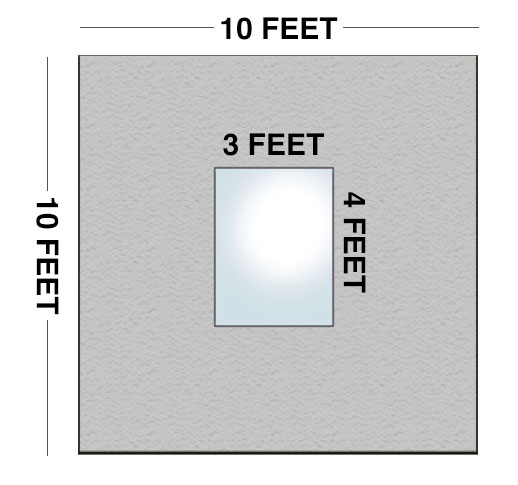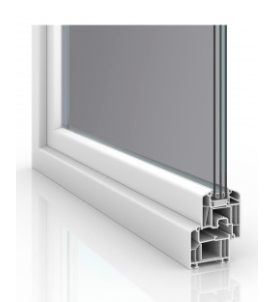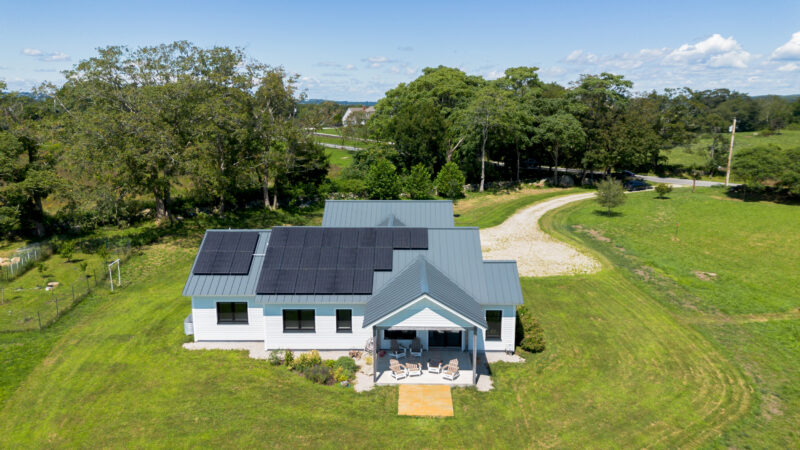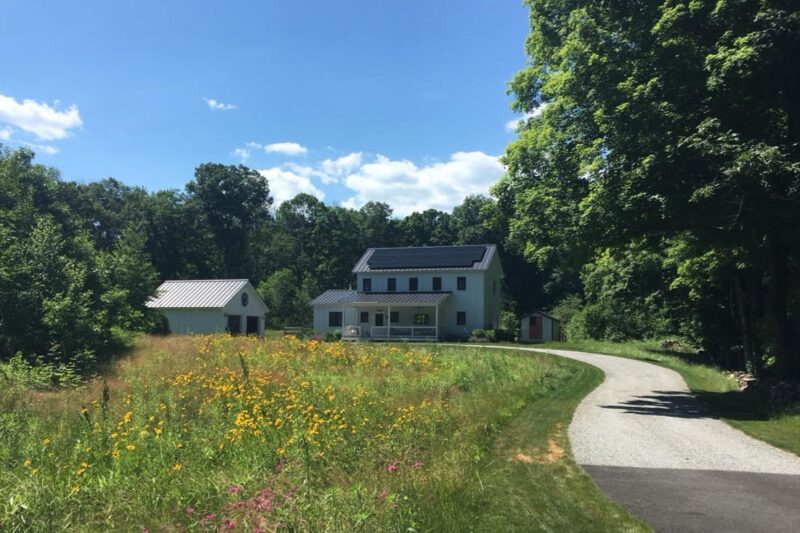When it comes to energy efficiency, triple-glazed windows clearly make a difference. But are they worth the investment? Every homebuilding project and each homeowner has their priorities, but at Unity Homes—where we place a high value on comfort and energy efficiency—the answer is yes. That’s why they are standard on every Unity home.
In terms of the thermal performance of the building envelope, windows provide one of the greatest opportunities for conserving energy and ensuring comfort. They account for most of the heat loss in cold climates and heat gain in hot climates. Glass, on its own, is a very poor insulator, having little to no resistance to the transmission of heat. Standard double-glazed windows, which trap a layer of air between the two panes, can reduce thermal conductivity and increase R-value—the measure of a material’s ability to resist the transmission of heat. Triple-glazing, however, when incorporated into a well-designed, well-constructed window, makes a far more significant difference.

For example, let’s take a 10’x10′ wall section with a 3′ x 4′ window in the center (as shown) and compare the overall R-value of a double-glazed versus a triple-glazed window in that wall.
The nominal R-Value of a standard Unity wall without a window is R-35. The R-value of a typical double-glazed window is R-3.3. Based on the size of that window in that wall section, the overall R-value of that wall drops to R-16.3. So, even though that window only makes up 12% of the wall section, it accounts for a 54% reduction in the overall thermal performance.
Using the same scenario—but with Unity’s standard Intus Arcade triple-glazed windows, which have an R-Value of 5.88—the effective R-Value of the wall section drops to R-22. That’s still a 38% reduction, but significantly better than the 54% of the double-glazed unit.
This example underscores the dramatic impact glazing can have on energy performance, and it demonstrates that, from the perspective of energy efficiency, the lower the overall percentage of glazing, the better. The challenge for Unity Homes is to balance the potential reduction of energy-efficiency and comfort caused by windows with the natural light, passive ventilation, and aesthetics that they provide. That’s why we don’t just use triple-glazed windows as standard, we also focus on orienting our homes in order to optimize solar heat gain in colder months and minimize solar overheating in the warmer months. As a result, in studies on Unity homes, we’ve found that triple-glazed windows were responsible for a 13 – 25% reduction in the overall annual heating and cooling loads.
Triple-glazed windows have another advantage. It’s simply not as comfortable to stand in front of a window with a surface temperature that’s significantly colder than the room. Most people will begin to feel uncomfortable when the temperature of the window glazing is 7-8°F colder than the ambient air in the room, because our bodies radiate heat to that cooler surface. In a situation, for example, in which a typical double-glazed window had a glass surface temperature of 55°F, Unity’s standard triple-glazed window would have a surface temperature of 62°F.
Energy savings + comfort? We like triple-glazed windows.
For more on the Intus Windows we use, see: https://www.intuswindows.com/products/windows/#arcade-description



















